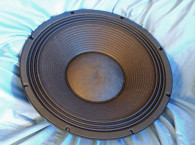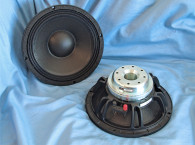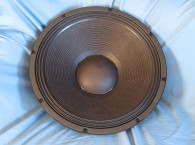Fane Acoustics, Ltd. in Batley, West Yorkshire, England, was officially registered as a company on June 11, 1958, making Fane one of the older companies in the pro sound industry. One of the early and notable technologies from Fane was the IonoFane plasma horn driver released in 1965. In the era of the “British Invasion” (musically speaking), Vox may have had the Beatles, but Fane was proud to say that artists such as Pink Floyd, The Who, and The Rolling Stones all used amps featuring Fane transducers. The history is rich and worth a read, and can be found on Fane International’s website at www.fane-international.com.

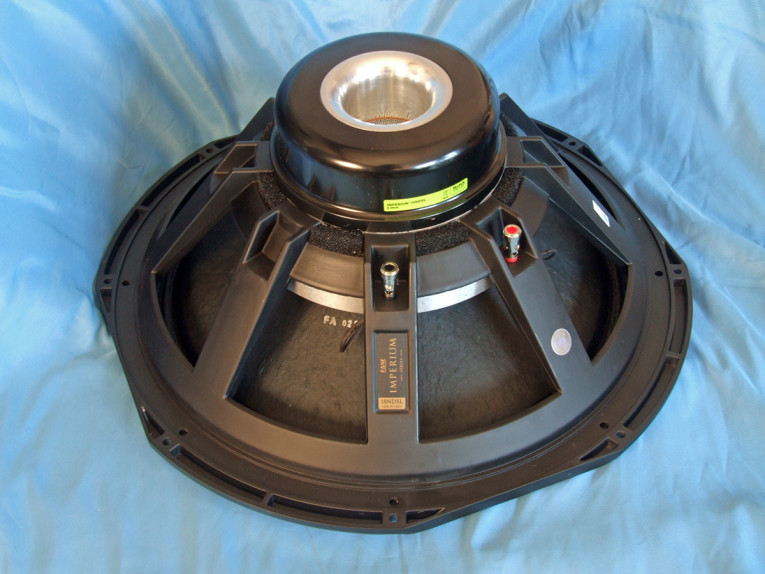
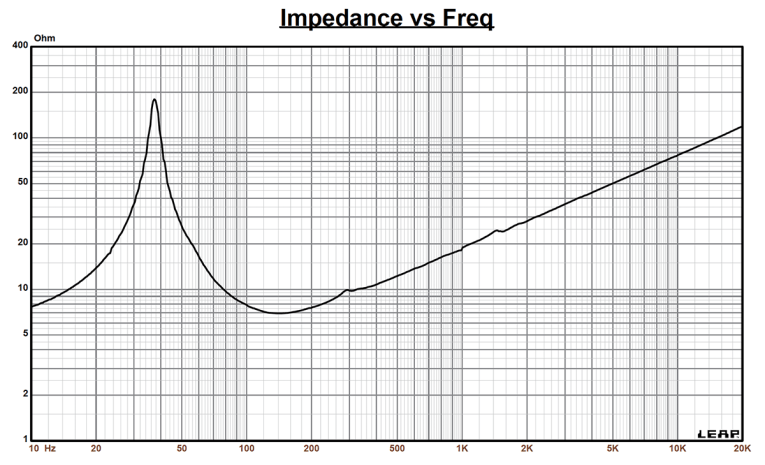

Applications for the 18NDXL Imperium include uses as a bass driver in multiway systems or as a dedicated woofer in bass reflex or horn-loaded designs. The feature set for the 18NDXL is like most high-performance pro sound drivers, rather substantial. Starting with the frame, the 18NDXL uses a proprietary eight-spoke cast-aluminum frame incorporating eight 40 mm × 10 mm rectangular vent holes in the area below the spider mounting shelf for enhanced voice coil cooling. This series of cooling vents allows air to move past the voice coil and across the front side of the neodymium motor assembly.
The cone assembly consists of a curvilinear paper cone along with a 6” diameter convex paper dust cap. Compliance is supplied by pleated coated cloth M-type surround and from two 6” diameter flat cloth spiders (dampers) mounted back-to-back on a 20 mm height aluminum standoff at the base of the frame.
The Fane 18NDXL Imperium’s motor is based on a neodymium ring magnet structure. The neodymium magnet motor was FEA-designed using a 127 mm (5”) diameter voice coil wound with round copper wire on a non-conducting glass fiber former. Motor parts, such as the return cup and rear heatsink plate are coated with a black heat-emissive coating for improved cooling, with the cooling additionally enhanced by a 63 mm flared pole vent. In addition to the convection cooling enhancements, the 18NDXL also has an aluminum core heatsink, which further wicks heat from the voice coil assembly. Factory-rated power handling for this driver is 1200 W AES and 2400 W program. Last, the voice coil is terminated to a pair of chrome color-coded push terminals.
I commenced testing the 18NDXL Imperium using the LinearX LMS analyzer and VIBox to create both voltage and admittance (current) curves. I clamped the driver to a rigid test fixture in free-air at 0.3 V, 1 V, 3 V, 6 V, 10 V, 15 V, 20 V, and 30 V, allowing the voice coil to progressively heat up between sweeps with a 200 Hz sine wave. Note that the 18NDXL Imperium was still quite linear at 30 V and certainly could have probably been tested at 40 V or more, but I generally call it quits at 30 V with high-efficiency pro sound drivers due to the sound pressure level (SPL) in my TSP testing room.

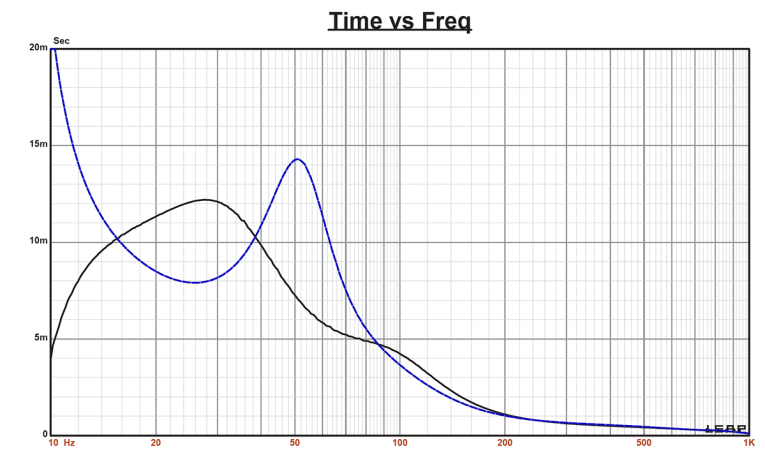

Following my established protocol for Test Bench testing, I no longer use a single added mass measurement and instead use the measured Mmd data (197.2 grams for the 18NDXL Imperium). I post-processed the 16 550- point stepped sine wave sweeps for each 18NDXL sample and divided the voltage curves by the current curves to generate impedance curves. Next, I derived the phase using the LMS calculation method and imported them, along with the accompanying voltage curves, to the LEAP 5 Enclosure Shop software.
Because the Thiele-Small (T-S) parameters provided by the majority of OEM manufacturers is generated using either the standard model or the LEAP 4 TSL model, I additionally created a LEAP 4 TSL parameter set using the 1 V free-air curves. I selected the complete data set, the multiple voltage impedance curves for the LTD model, and the single 1 V impedance curve for the TSL model in the Transducer Model Derivation menu in LEAP 5 and created the parameters for the computer box simulations. Figure 1 shows the 1 V free-air impedance curve. Table 1 compares the LEAP 5 LTD and TSL data and factory parameters for both of Fane 18NDXL Imperium samples.
LEAP 5 parameter calculation results for the Fane 18NDXL Imperium were reasonably close, with the exception of a larger Vas. The fs/Qt ratios are very close, such that when I programmed the factory TSP in LEAP with the same box simulation, the factory curve exactly overlaid the curves done with my measurements. The only real differences were Fane uses a slightly more conservative Sd calculation, plus Fane also uses 1 W/1 m for sensitivity instead of my 2.83 V/1 m, which accounts for the higher number on the datasheet. Also the published coil length and gap height dictate a 8 mm Xmax, so the quoted 12 mm factory Xmax is, as with a lot of other pro sound manufacturers, specifically accounting for the gap area fringe field, which I certainly understand and have no problem with.
Following my established measurement protocol, I configured computer enclosure simulations using the LEAP LTD parameters for Sample 1. I programmed two computer box simulations into LEAP 5, the first a Quasi Third-Order Butterworth (QB3) vented box with a 1.84 ft3 volume (15% fill material) tuned to 47 Hz and an Extended Bass Shelf (EBS) vented alignment with a 3.5 ft3 volume tuned to 36.9 Hz, also simulated with 15% fiberglass damping material.
Figure 2 displays the results for the 18NDXL in the two vented enclosures at 2.83 V and at a voltage level sufficiently high enough to increase cone excursion to Xmax + 15% (9.2 mm for the 18NDXL). This produced a F3 frequency of 72 Hz (F6 = 57 Hz) for the QB3 vented alignment and -3 dB = 51 Hz (F6 = 46 Hz) for the EBS vented simulation. Increasing the voltage input to the simulations until the maximum linear cone excursion was reached resulted in 124 dB at 60 V for the QB3 box and 124 dB for the same 60 V input level for the larger EBS vented box. Figure 3 shows the 2.83 V group delay curves.
Figure 4 shows the 60 V excursion curves. Please note that the drivers were not excursing beyond 4 mm at 60 V and still less than 4 mm at 90 V, so I would conclude that the 18NDXL is more thermally limited than excursion limited, which is a good thing.

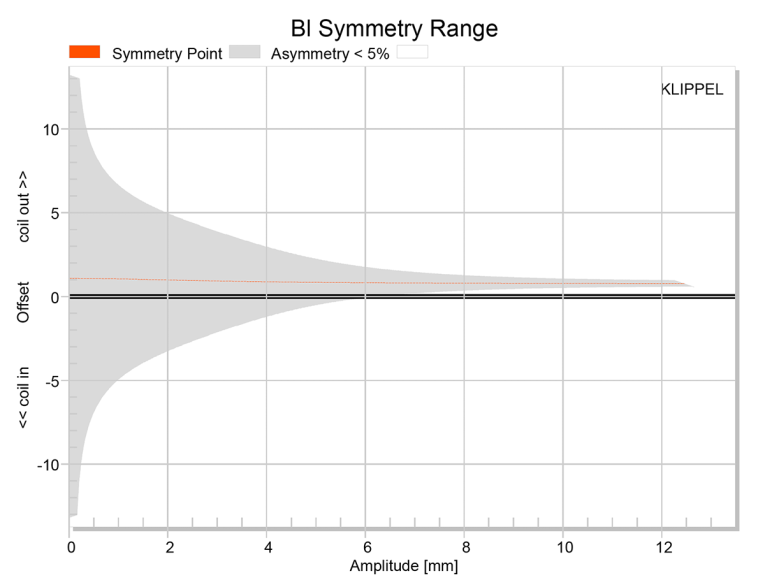
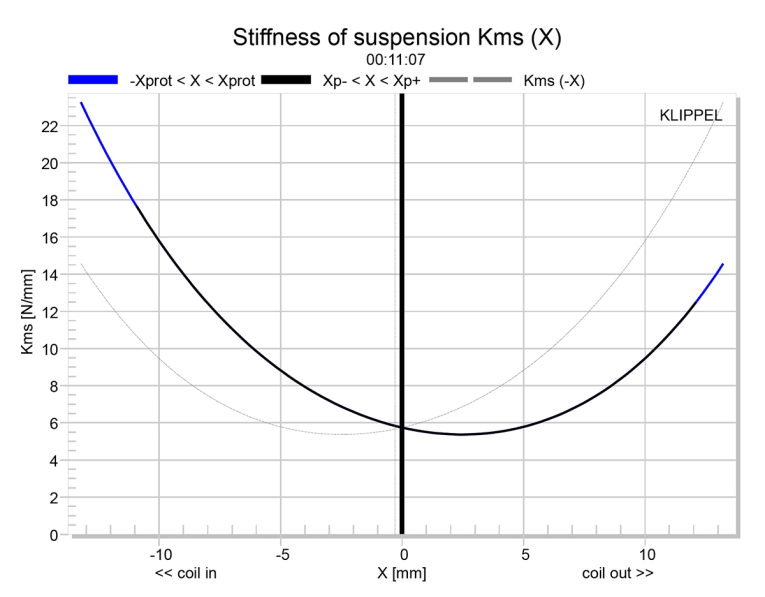
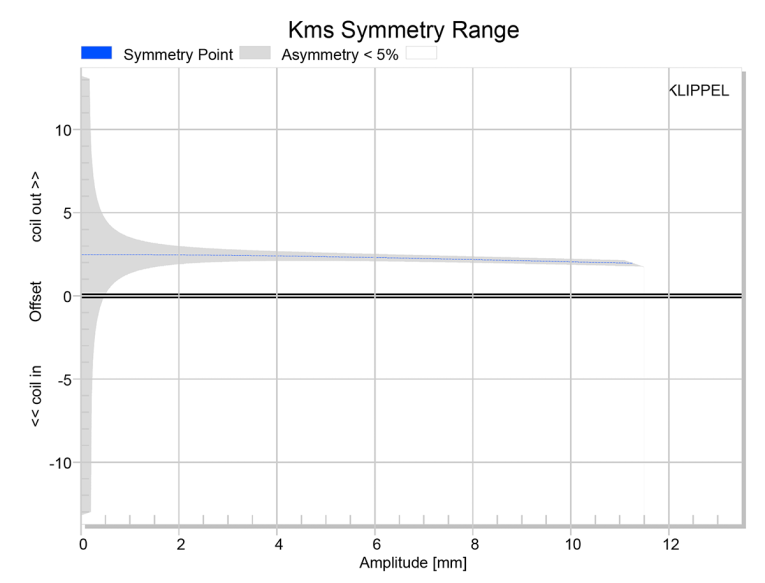
Klippel analysis for the Fane 18NDXL Imperium produced the Bl(X), Kms(X), and Bl and Kms symmetry range plots given in Figures 5–8. (Our analyzer is provided courtesy of Klippel GmbH and the analysis is performed by Patrick Turnmire, owner of Redrock Acoustics and author of the SpeaD and RevSpeaD transducer development software.)
The Bl(X) curve for the 18NDXL (see Figure 5) is rather broad and symmetrical with some small amount of offset. Looking at the Bl symmetry plot (see Figure 6), this curve shows a trivial 0.33 mm coil-out offset at the 8 mm physical Xmax position. The offset set remains constant throughout the driver’s operating range, so the coil position in the gap is certainly within QC tolerance.
Figure 7 and Figure 8 show the Kms(X) and Kms symmetry range curves for the Fane 18NDXL Imperium. The Kms(X) curve is also fairly symmetrical in both directions accompanied by an amount of coil-out offset. Looking at the Kms symmetry range plot, the coil-out offset at the driver’s 8 mm physical Xmax is about 2.2 mm. Displacement limiting numbers calculated by the Klippel analyzer for the 18NDXL Imperium were XBl at 70% Bl = 10.1 mm (about 2 mm beyond physical Xmax) and for XC at 75% Cms was 7.3 mm (nearly at Xmax), which means for the 18NDXL Imperium, the compliance is the most limiting factor for the prescribed distortion level of 20%, so in a three-way application, quite good.


Figure 9 gives the Fane 18NDXL Imperium’s inductance curves Le(X). Inductance will typically increase in the rear direction from the zero rest position as the voice coil covers more pole area, which is what is happening here. The inductance swing for this driver is 0.65 mH coil-in to 0 and 0.41 mH coil-out from 0, which might be reduced with the addition of an appropriated placed shorting ring (Faraday Shield).
Following the Klippel testing, I normally perform frequency response measurements on and off-axis, however, I do not have the logistical capability of doing that with 18” and larger diameter woofers, and also because 18” and larger drivers generally crossover over below 500 Hz where there generally isn’t much that is worth talking about. However, I have included the factory on-axis and 45° off-axis response measured in a 975 ltr. enclosure (see Figure 10).
For the remaining series of tests on the Fane 18NDXL Imperium, I employed the Listen, Inc. SoundCheck AudioConnect analyzer and SCM 1/4” microphone (courtesy of my friends at Listen, Inc.) to measure distortion and generate time-frequency plots. For the distortion measurement, I mounted the 18NDXL Imperium rigidly in free-air, and set the SPL to 104 dB at 1 m (11.95 V), using a pink noise stimulus. Then, I measured the distortion with the Listen microphone placed 10 cm from the driver.
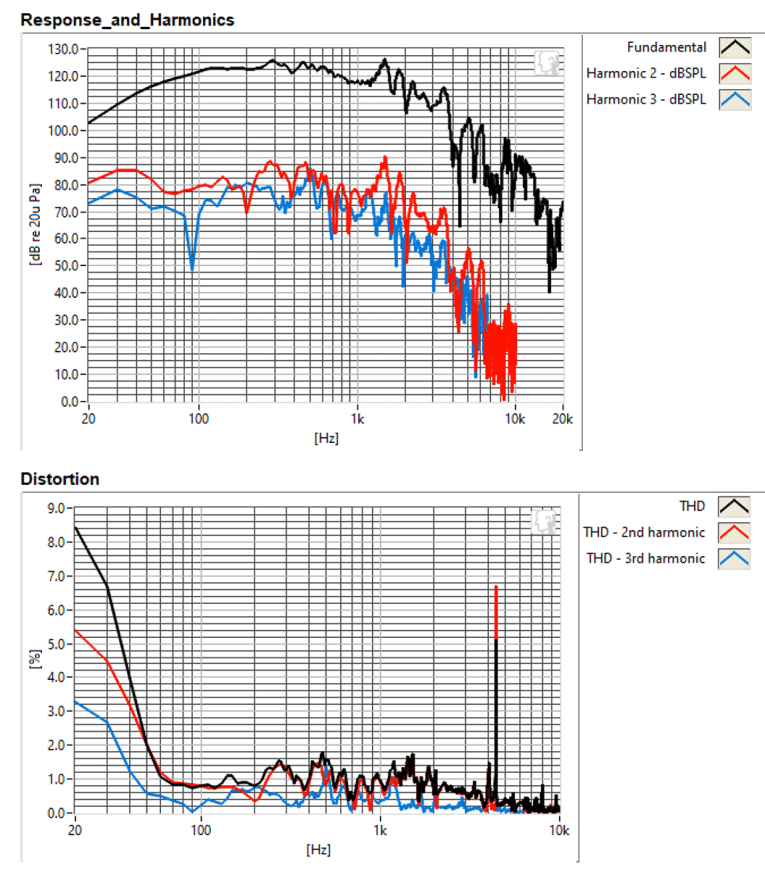
This produced the distortion curves shown in Figure 11. Again, since I do not have test enclosures for 18” drivers, I did not perform the usual SoundCheck time domain plots (cumulative spectral decay and Wignerville). Fane is one of the older names in the pro sound industry and also has a highly regarded reputation. The data presented for the Fane 18NDXL Imperium certainly attests to that fact.
For more information about this woofer and other Fane pro sound and musical instrument drivers, visit Fane International pro sound at www.fane-international.com and Fane Guitar speaker website at www.fane-acoustics.com. VC
This article was originally published in Voice Coil, April 2020.




